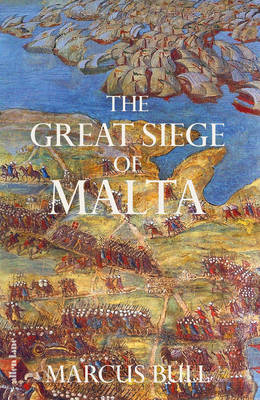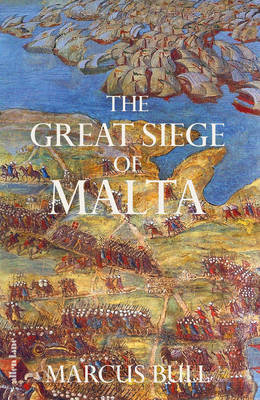
- Afhalen na 1 uur in een winkel met voorraad
- Gratis thuislevering in België vanaf € 30
- Ruim aanbod met 7 miljoen producten
- Afhalen na 1 uur in een winkel met voorraad
- Gratis thuislevering in België vanaf € 30
- Ruim aanbod met 7 miljoen producten
Zoeken
Omschrijving
A major new account of the epic siege of the island fortress of Malta Even as the great siege began it was understood by both sides to be an epic – a potentially decisive encounter between an uneasy assortment of soldiers, native Maltese, adventurers and Knights Hospitaller on a strategically crucial but near waterless island and a vast, seemingly all-powerful Ottoman armada. With three quarters of the Mediterranean’s coasts already in the hands of the Sultan and his allies, all eyes were now on Malta. This superb new account of the siege emphasises the crucial importance of the siege while at the same time putting it in a far wider context.
While since mistakenly recast as a climactic battle between the West and the East, it was also much more interesting and nuanced than that – both sides had many other interests and priorities beyond Malta. Süleyman the Magnificent had conquered and subsumed regions from Hungary to the Persian Gulf; Philip II was building an empire in America and Asia. Drawing on a wide range of eyewitness stories, Marcus Bull gives a vivid sense of the period’s technologies, values and assumptions.
It was a grim world built on the labour of many thousands of disposable galley-slaves, shockingly brutal forms of warfare and religious absolutism. But it was also a world filled with the most extraordinary new discoveries and ideas. Both these worlds come together in the siege and in this book.
While since mistakenly recast as a climactic battle between the West and the East, it was also much more interesting and nuanced than that – both sides had many other interests and priorities beyond Malta. Süleyman the Magnificent had conquered and subsumed regions from Hungary to the Persian Gulf; Philip II was building an empire in America and Asia. Drawing on a wide range of eyewitness stories, Marcus Bull gives a vivid sense of the period’s technologies, values and assumptions.
It was a grim world built on the labour of many thousands of disposable galley-slaves, shockingly brutal forms of warfare and religious absolutism. But it was also a world filled with the most extraordinary new discoveries and ideas. Both these worlds come together in the siege and in this book.
Specificaties
Betrokkenen
- Auteur(s):
- Uitgeverij:
Inhoud
- Aantal bladzijden:
- 352
- Taal:
- Engels
Eigenschappen
- Productcode (EAN):
- 9780241523650
- Verschijningsdatum:
- 25/03/2025
- Uitvoering:
- Hardcover
- Formaat:
- Genaaid
- Afmetingen:
- 152 mm x 236 mm
- Gewicht:
- 639 g

Alleen bij Standaard Boekhandel
+ 83 punten op je klantenkaart van Standaard Boekhandel
Beoordelingen
We publiceren alleen reviews die voldoen aan de voorwaarden voor reviews. Bekijk onze voorwaarden voor reviews.








